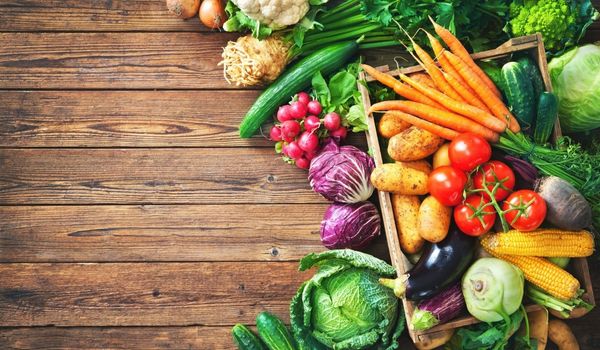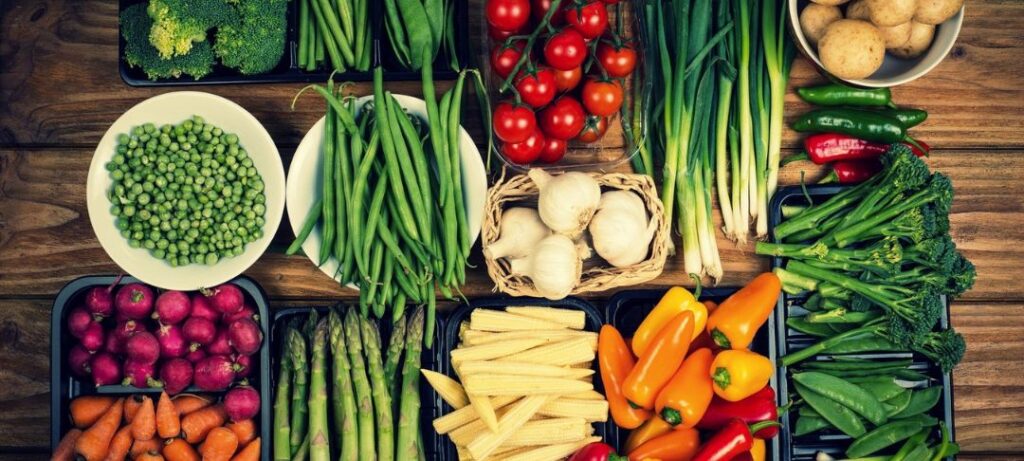Traveling can often be stressful and challenging, especially when it comes to finding healthy and convenient food options. With the increasing popularity of domestic travel, many travelers are left wondering if they can bring their own food, including fresh vegetables, on their flights. Whether you’re looking to save money or simply want to eat healthier, carrying vegetables on a domestic flight can have numerous benefits. In this blog post, we’ll explore the advantages of carrying vegetables on domestic flights, regulations for carrying vegetables on domestic flights, and best practices for packing and storing your vegetables.
Advantages of Carrying Vegetables on Domestic Flights
Carrying vegetables on a domestic flight can have numerous benefits. Firstly, it provides travelers with convenient and accessible access to healthy food options. Rather than relying on airplane food, which is often overpriced and unsatisfying, travelers can bring their own fresh and nutritious vegetables to snack on during their flight. This is especially beneficial for individuals who are health-conscious and want to maintain their healthy eating habits while traveling.
Another advantage of carrying vegetables on domestic flights is cost savings. Purchasing food at the airport or on the plane can be expensive, and often, the options available are not healthy or of good quality. By bringing your own vegetables, you can save money and ensure that you have access to healthy, nutritious food throughout your flight. Finally, carrying vegetables on domestic flights can also have environmental benefits. Disposable containers and packaging from airplane food can contribute to waste and harm the environment. By bringing their own food, including vegetables, travelers can reduce the amount of waste generated on their flights and make a positive impact on the environment.
Regulations for Carrying Vegetables on Domestic Flights
When it comes to carrying vegetables on domestic flights, it’s important to be aware of the regulations and policies of different airlines. While some airlines may allow travelers to bring their own food, including vegetables, others may have restrictions on what can be brought on board. The TSA (Transportation Security Administration) also has guidelines for carrying food items, including vegetables, on domestic flights. Perishable food items, such as vegetables, must be placed in a clear, plastic, resealable bag and must undergo the usual security screening process. It is also important to note that some vegetables may not be allowed on flights due to their potential to cause a mess or attract unwanted insects. It is important to check with the airline before traveling to ensure that you are aware of their policies and restrictions regarding carrying food, including vegetables, on domestic flights. This will help you avoid any potential issues during security screening or boarding.
Overcoming Challenges When Carrying Vegetables on Domestic Flights
Carrying vegetables on a domestic flight can seem like a daunting task, especially with the numerous regulations and restrictions set by airlines. However, with a little bit of preparation, it is possible to carry fresh and healthy vegetables on your next flight. One of the biggest challenges when carrying vegetables is dealing with airport security regulations. The Transportation Security Administration (TSA) allows travelers to bring a quart-sized bag of liquids, aerosols, gels, creams, and pastes in their carry-on and checked bags. These items must be placed in a clear, plastic, sealable bag for inspection. Vegetables, especially those with high water content, such as lettuce or cucumbers, can be a challenge to pack in a way that meets TSA regulations. To overcome this challenge, travelers can choose vegetables that are less likely to leak, such as carrots, bell peppers, or cherry tomatoes, and pack them in a leak-proof container. Another challenge when carrying vegetables on a domestic flight is handling changes in temperature and pressure during the flight. This can cause vegetables to wilt, spoil, or become discolored. To mitigate this, travelers can wrap the vegetables in damp paper towels and store them in an insulated container to keep them cool and hydrated. This will help maintain their freshness and prolong their shelf life. Additionally, it is also important to consider the flight’s duration and layover times, as vegetables can deteriorate over time if they are not stored properly. To overcome this challenge, travelers can choose vegetables that are less sensitive to temperature changes, such as sweet potatoes, or pack them with a cold pack to help keep them fresh. Finally, unexpected delays can also be a challenge when carrying vegetables on a domestic flight. Delays can cause travelers to miss their flights, or they may not have access to refrigeration for an extended period of time. To overcome this challenge, travelers can pack a small cooler or insulated bag to store their vegetables in case of unexpected delays. This will help maintain their freshness and prevent them from spoiling. In the event of a missed flight, travelers can also consider alternative options, such as purchasing fresh vegetables at the destination or using meal delivery services.
Alternative Options for Carrying Vegetables on Domestic Flights

For those who prefer not to carry fresh vegetables on a domestic flight, there are several alternative options available. One option is to purchase fresh vegetables at the destination. Many airports have small grocery stores or food stands that sell fresh produce, allowing travelers to purchase vegetables after they arrive at their destination. This option provides the added benefit of being able to select vegetables that are in season or locally sourced, which can often lead to a more flavorful and fresh meal. Another alternative option for carrying vegetables on a domestic flight is to choose pre-packaged vegetable options. Many food companies now offer pre-packaged vegetable snacks, such as carrot sticks, celery sticks, or cherry tomatoes, that are easy to pack and carry. These options are not only convenient but also provide a healthy snack option for travelers on the go. Additionally, many airlines now offer pre-packaged vegetarian meals for their in-flight menu, providing travelers with a healthy and convenient meal option. Finally, travelers can also consider using meal delivery services to have fresh, healthy meals delivered to their destination. These services offer a variety of menu options, including vegetarian and vegan options, and can be customized to meet individual dietary needs. This option is especially useful for travelers who have a busy schedule or who will be staying at a hotel without a kitchen.
What to Consider Before Carrying Vegetables on Domestic Flights
Before carrying vegetables on a domestic flight, it’s important to consider several key factors to ensure that the vegetables arrive at their destination in the best possible condition. One of the first things to consider is airport security regulations. The Transportation Security Administration (TSA) allows travelers to bring a quart-sized bag of liquids, aerosols, gels, creams, and pastes in their carry-on and checked bags. Vegetables, especially those with high water content, such as lettuce or cucumbers, can be a challenge to pack in a way that meets TSA regulations. To avoid any issues with airport security, it’s a good idea to choose vegetables that are less likely to leak, such as carrots, bell peppers, or cherry tomatoes, and pack them in a leak-proof container. Another important factor to consider is the length of the flight and layover times. Vegetables can deteriorate over time if they are not stored properly, so it’s important to take into account the duration of the flight and any layover times. To ensure that the vegetables arrive at their destination in the best possible condition, travelers should wrap them in damp paper towels and store them in an insulated container to keep them cool and hydrated. They can also choose vegetables that are less sensitive to temperature changes, such as sweet potatoes, or pack them with a cold pack to help keep them fresh. It’s also important to consider the potential for unexpected delays, such as missed flights or unexpected layovers. Delays can cause travelers to miss their flights, or they may not have access to refrigeration for an extended period of time. To mitigate this risk, travelers can pack a small cooler or insulated bag to store their vegetables in case of unexpected delays. This will help maintain their freshness and prevent them from spoiling. In the event of a missed flight, travelers can also consider alternative options, such as purchasing fresh vegetables at the destination or using meal delivery services. In addition to these practical considerations, it’s also important to consider personal preferences and dietary restrictions. For travelers with dietary restrictions, such as vegetarians or vegans, carrying fresh vegetables can be a convenient and healthy option. However, for those who prefer not to carry fresh vegetables, there are several alternative options available, including pre-packaged vegetable options and meal delivery services. These options can provide a convenient and healthy meal option for travelers on the go. Finally, it’s important to consider the cost of carrying vegetables on a domestic flight. Fresh vegetables can be expensive, especially if purchased at an airport or in a flight. To keep costs low, travelers can purchase fresh vegetables at a local grocery store or farmer’s market before their trip. Additionally, by packing a cooler or insulated bag and wrapping the vegetables in damp paper towels, travelers can reduce the need for additional packaging and minimize the cost of carrying vegetables on a domestic flight.
Conclusion
In conclusion, carrying vegetables on domestic flights can have numerous benefits, including convenient access to healthy food options, cost savings, and environmental benefits. However, it’s important to be aware of the regulations and policies of different airlines and to follow TSA guidelines for carrying food items on domestic flights. By following these guidelines and best practices for packing and storing vegetables, travelers can ensure that they have a positive and stress-free experience while bringing their own healthy food options on their flights.
